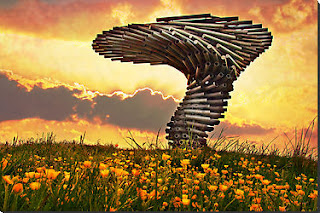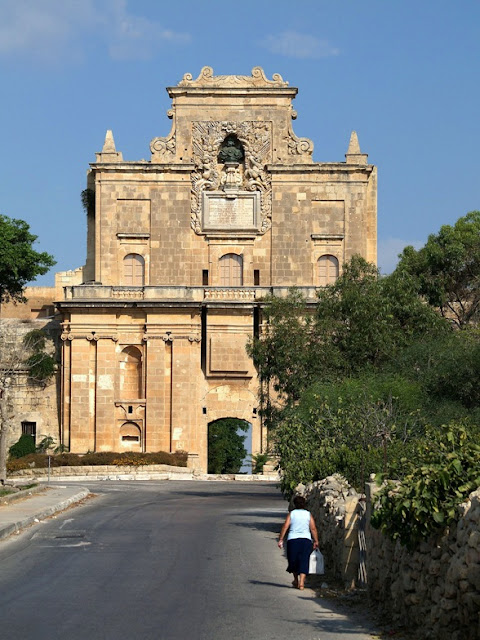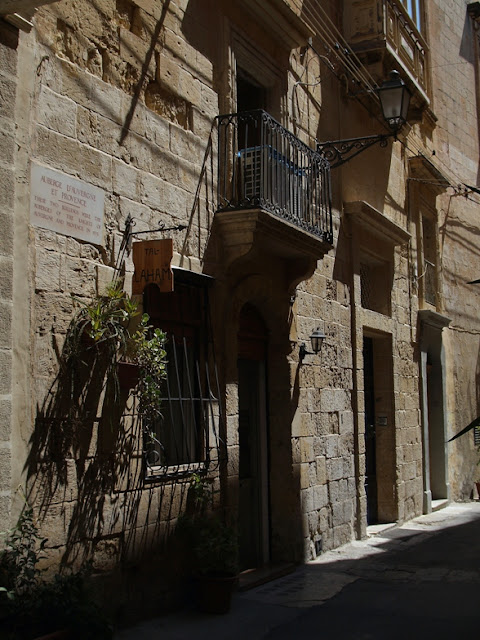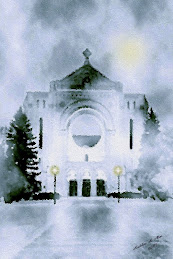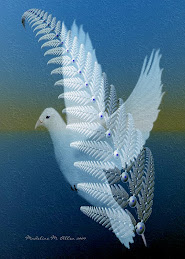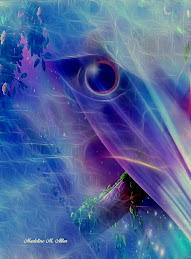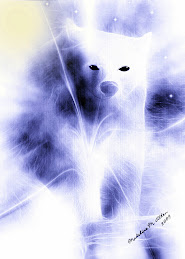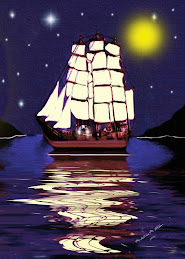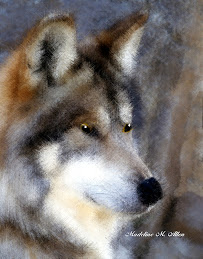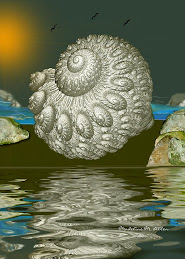SmudgeArt News Blog
is Pleased to Present to you
Our Global Interview for June 2010
We will travel this month to Malta
We hope that you will enjoy
this Interview with
Photographer / Artist Anthony Vella
from Xghajra, Malta
While he gives us an exciting, detailed,
Personal History Tour
of his beautiful
Country of Malta
First of All, Tony, Welcome to SmudgeArt News Blog.
It is my greatest pleasure to have you here
and to have the honor of this interview with you.
We first met five years ago at Digital Photo Forum.
Your commented on a piece of my photography
and that touched my heart.
It was a capture of a Ship docked in
St. John's Harbor in Newfoundland, Canada.
My home Province.
In that comment you shared about a time,
you once were there when you were in the Service.
That opened a door to not only our personal friendship,
A friendship I have treasured
but also a Spiritual connection with you.
I was just starting out in Photography myself
when we first met and shortly after that I
started developing my own style of artwork
titled as "SmudgeArt", Digital Art.
You quietly became my Teacher,
and it feels like you where always there
with sound advice, guidance and encouragement.
This I have much gratitude for.
"Study and be part of nature for inspiration and observe
colours, light and shadow", you would advise me and
"take time for rest".... lol! I still have a hard time with that.
Your Spirituality and your Amazing Talents as an
Artist, Photographer and your Knowledge
of the History of Malta Enlightens and Inspires me.
As I am sure, that You also Inspire and Touch the Hearts
of many other Artist's around the world
that you come into contact with, as we all,
"Walk in Each Other's Footsteps on this Journey"....
Q: Tony can you please give us a little of your personal background on.....
who you are, your location, family, hobbies and your life’s profession(s)?
A: My name is Anthony (Tony) Vella. I am a 62 year old pensioner. I am happily married to Giorgina - Our 41st Wedding Anniversary falls on this coming June.
I am also the father of two wonderful girls, Romina Maria and Stephanie Maria Lorraine, and the lucky grandfather of three beautiful kids, Matthew Joseph (13), Jodie Grace (6) and Mireya Francesca (5).
I hail from the beautiful and historic Island of Malta in the centre of the Mediterranean Sea, just 93km south of Sicily and 288 km from North Africa. Malta is the largest Island of the Maltese Archipelago, with the other two Islands being Gozo and little Comino which is the least inhabited of the three. Together they have a population of about 400,000.
I have Painting and Drawing, listening to Classical Music and reading as my indoor hobbies and Photography, Fishing and Shooting Trap as my outdoor hobbies. I consider myself as an outdoor man.
I’ve worked as an Aircraft Engine Technician in the Royal Air Force, as a Marine Engineer with Fyffes Group Ltd of Southampton UK, and as a Production Manager with an Italian/Libyan but locally based Manufacturing Engineering Company producing Surface and Submersible water pumps.
Q: When did you become a photographer and what captured your heart and soul Tony to be a Photographer and a Painter of fine art?
A: I’ve always loved Art in all its forms. During my schoolboy days I involved myself in a lot of artistic activities like acting, poetry, literature and of course painting and drawing. At the age of fourteen I entered and won first prize ( in the 14 -17 year age group) in a national painting competition organized by
The Malta Society of Arts, Manufacture and Commerce. My entry was a portrait.
I started interesting myself in photography some five years ago when I bought my first digital camera, a Konica Minolta Z3.
Q: Do you have any formal training for your Photography or Painting?
A: After winning that painting competition in 1962, I enrolled for evening classes (two evening sessions per week of two hours duration each) in drawing at the Malta School of Art in Valletta. However, because I was attending a full time three year course in General Engineering at the same time, my attendance at art-school was quite intermittent and I attended only for the first year. As for photography I’ve never had any formal training at all and consider myself as a self-thought amateur.
Q: That’s fantastic Tony! So tell us, what inspires you artistically?
A: Nature. I just love nature in all its glory. No single day is the same as another. I always feel the urge to capture the beauty that’s around me and preserve it to share with others or to refer to on duller days. I’m slowly building up a portfolio of some of the beautiful spots in Malta and Gozo, some of which I hope to paint when the time comes.
Q: Who are your influences?
A: For both painting and photography I find the 16th Century (1571-1610) Milanese painter Caravaggio (Michelangelo Merisi da Caravaggio) to inspire me artistically. I love his chiaro-scuro paintings where he exploits the use of light and shadow to add life and realism his paintings.
Q: Tony what are your favourite Mediums to work in? ....
*Photography / Digital or Film...
~Please share with us what kind of equipment, camera/s and lenses you currently use
~Would you explain the techniques you use to create your fascinating photo compositions
*Also would you share with us your favourite mediums in Painting ?
A: I prefer digital photography for its practicality. It’s easy to understand and use and in to-day’s computerized world, nearly anything is possible. Unlike film you don’t have to wait till you develop a picture to know the result....you can see it there and then and if you don’t like, erase it and take another shot at a different exposure or from a different angle. However, I always set my Camera on Manual settings, where I can play about with light and contrast settings. I am now doing some of my shooting in RAW format, which I later adjust in Olympus 2 standard software. For HDR I use Photomatix 3 software, which is very easy to use.
• I currently own and use two Olympus Digital SLR Cameras. An E-volt E 330 (which I fondly refer to as My Old Faithful and My Baby) and also use a later model, the E-volt E-520. As for lenses I use the kit lenses supplied i.e. the Zuiko/Olympus Digital 14-45mm (1:3.5-5.6) and 40-150mm (1:3.5-4.5) which came with the E-330 and the Zuiko/Olympus Digital 14-42mm (1:3.5-5.6) which came with the E-520. I also plan to buy the Zuiko/Olympus 70-300mm ED in the near future (and when I can afford to!).
• I don’t use any special technique and use very minimal post processing, except for HDR and RAW, where I must adjust the lighting and colours. However I’ve always said that, as with painting, the subject is not important. It’s the composition and light which makes a good picture. I’ve seen fine images depicting old derelict things and even garbage.
• I’ve always preferred oils for painting. I find oils very practical to use. They don’t dry on you so quickly like acrylics (which because of Malta’s hot weather can give you a lot of problems). Oils can also be worked into fine glazes as required.
Q: Tony when you need to spend time to get connected spiritually and just to be Tony, where do you go or what do you do to relax and leave the world behind?
Mgarr Harbour - Gozo
Mgarr Harbour , showing one of the Gozo Channel Line Ferry Boats, the Island of Comino with its castle in the mid-ground and Malta in the misty background.
The Gothic Church of Our Lady of Lourdes
The Gothic Church of Our Lady of Lourdes
on the hill overlooking
Mgarr Harbour in Gozo
A: When that time comes (about once a year at least!), being half Gozitan from my mother’s side, I go to the smaller sister island of Gozo for a week or so. I usually rent the same flat in the small and quiet village of Zebbug. The flat is situated on top of a hill and offers fantastic sun-rise views and of the beautiful Qlejgha valley below. Gozo, which is mostly hills and valleys, is not as much developed as Malta and many parts of the countryside have been lying in their natural state for centuries.
Ggantija Megalithic Temple, Xaghra - Gozo
Gozo is also full of Historical sites, one of which are these Megalithic Temples of Ggantija in Xaghra dating back to c 3600 – 2500 BC, making this UNESCO World Heritage Site more than 5500 years old. Legend has it that these huge stones were erected by a Female Giant who used to feed on dried broad beans!
Anyone wishing to know more about Ggantija can refer to this link...
Zebbug, Gozo / 1
Sunrise from my flat in Zebbug, Gozo
Zebbug, Gozo / 2
View of the Valley from my flat -Zebbug, Gozo.
Qlejgha Valley and the Blue Mediterranean Sea.
Victoria or Citta Vittoria is the capital of Gozo. It has a population of about 6500, and by population it is the largest locality in Gozo. The name ‘Victoria’ was given to this Medieval Town in 1887 by the British Government on the occasion of Queen Victoria’s Diamond Jubilee, at the request of the Bishop of Malta, Mons. Sir Pietro Pace. However it is still referred to by its old name of Rabat by most of the Gozitans.
The Area around Victoria especially the hilltop where the Cittadella is built, has been settled since Neolithic times. The Cittadella lies in the heart of Victoria and is known to have been fortified as early as the Bronze Age, around approximately 1500 BC. It was later developed by the Phoenicians and continued into becoming a Complex Acropolis during Roman times.
Figurines
This set of figurines, on show in the Archaeological Museum inside the Cittadella, was found grouped together at the burial place of Xaghra Stone Circle in Gozo and date between 3150 and 2500 BC. The sculptures show a relatively high artistic achievement especially in the elaborate treatment of some of their headdresses. They are carved in local Globigerina limestone and their context suggests some ritual use associated with the dead.
Gebla ta' Mejmuna
Majmuna’s tombstone exhibited inside the
Archaeological Museum inside the Cittadella.
A Muslim girl named Majmuna (Maimuna) who died in the 12th Century AD, had her tomb embellished with a marble slab carrying an inscription neatly engraved in Kufic Arabic script.
Apart from giving few biographical details about the girl, the inscription also quotes the Quran.
The inscription is engraved on a recycled marble slab as suggested by the Roman Sculptured decorations on its other side.
The Citadella from Xaghra
The Cittadella a UNESCO World Heritage Centre,
as seen from the old village of Xaghra.
The North side of the Cittadella dates back to the Aragonese period, whilst the South Flank, overlooking Victoria was re-constructed under the Knights of Saint John between 1599 and 1603,
who built the massive stone fortifications which rise above the Town.
Within the Cittadella walls, on the site where a Roman temple dedicated to Juno once stood,
lies the 17th Century Baroque Cathedral designed by Lorenzo Gafa’, the Maltese Architect who also designed and built the Cathedral of Mdina. It was built in place of a medieval church which was destroyed by the earthquake of 1693. It was finished and consecrated in 1716
A considerable part of the Cittadella is still in ruins following the disastrous raid by Turkish Corsairs in 1551, the 1693 earthquake and unfortunately, the many years of neglect.
*HISTORICAL NOTE: In July 1551 Ottomans under Turgut Reis and Sinan Pasha invaded and ravaged Gozo and enslaved most of its inhabitants, about 5000, taking them to Tarhuna Wa Msalata in Libya, their departure port in Gozo was Mġarr ix-Xini. The re-population of the island of Gozo by people from mainland Malta, was undertaken by the Knights of Malta.[1] between 1565 and 1580
The Cathedral of Santa Maria
The Cathedral dedicated to Santa Maria inside the Cittadella – Gozo
Inside the Cittadella, one can still find old buildings which still function as ecclesiastical or public offices.
Bondi’s Place, a fine example of fine 16th Century Spanish architecture was once the town-hall. It is now being used as the Gozo Museum of Archaeology.
The Ecclesiastical Court, erected in 1496 is still used as the Cathedral Chapter house.
The Medieval building which formerly served as the residence of the ‘Hakem’ or the head of the Gozo Commune is now being used as the Gozo Civic Registry Office.
The Old Law Courts, erected under the rule of Grandmaster Alof de Wignacourt (1697 – 1720), are now the Magistrate’s Court for Gozo. The building still bears the Grandmaster’s escutcheon adorning its facade.
There are two Sicolo-Norman structures which both have primitive double lighted windows similar to those seen in Malta. One of these buildings has been converted into a Folklore Museum.
The Palace of Bishop Cagliares (1614 – 1633) attached to the chapel of Saint Joseph (1555) lies further up and to the back of the Cathedral.
The Citadella at Night
Typical Alley In Victoria, Gozo’s Capital City
Victoria of Rabat , a once flourishing Medieval Town,
is noted for its cobweb of
beautiful narrow streets and blind alleys.
A Street In Victoria - Gozo
A Lady making Gozo Lace in Victoria
Specimens Of Gozo Lace
Gozo is well known for its fine lace, which was once(especially during the times of the Knights of Malta and during the British occupation of the Islands) much sought after from all over Europe.
Like all old trades, lace-making in Gozo is a dying art. There have been many attempts to revive this once prosperous business but prices are not as competitive as they once were.
The Village Blacksmith
The Village Blacksmith in Gozo. Another dying Art.
Q: Tony you live in a Country with such rich History. What you have shared so far is truly wonderful. Do you have a few favourite links to share with us on your beautiful Malta?
A: Malta has a lot of History to write about starting from around 4500 BC to the present day. It would be unfair for Malta and for the readers if I was to try and briefly write its history, for I’m sure it would take quite a few pages of this interview, besides the fact that I’m afraid I would leave something important out. However for those interested I have added these three links below which should give a very good account of what Malta has been through, throughout the ages.
*Since we don’t have enough time and space to write much about the Island of Malta, I shall write something about my hometown of Zabbar, and also the nearby Three Cities (Cospicua, Vittoriosa and Senglea) enclosed behind the bastions and fortifications of Cottonera.
ZABBAR - CITTA HOMPESCH
I was born in the small City of Zabbar, (population of about 15,500), which lies in the Southern and most historic part of the Island. In 1797 Zabbar was given the title of ‘Citta Hompesch’ by the German Grandmaster Ferdinand Von Hompesch, the last Grandmaster of the Order of the Hospitalier Knights of Saint John of Jerusalem to reign in Malta. The people of Zabbar built and named a Triumphal Arch on the entrance to the City in his name.
Zabbar lies just on the outskirts and inland of the Three Cities, referred to as Cottonera, (after Grand Master Nicholas Cotoner who fortified the Three Cities) namely Cospicua, Senglea and the old but beautiful City of Vittoriosa, which is the most historic of the three.
Hompesch Arch
Hompesch Arch marking the entrance to the City of Zabbar.
Zabbar played an important part in the uprising against the French occupation of the Island as it was one of the Southern Bases of these insurgents. An important skirmish between these heroes and a French garrison took place in its main square, and in front of the Sanctuary.
On the night of the 5th of October 1789, the French carried out a surprise attack on Zabbar with the aim of breaking up the insurgent group and stealing as much food as possible, as because they had retreated inside the nearby Fort Ricazoli and had ran out of food, they were reduced to eating rats.
The skirmish lasted for about three hours. It is said that a woman who was watching the fight from her rooftop noticed that her husband’s gun was misfiring and hastily went down amidst the fighting men to give her husband another musket. When both the French and the Maltese witnessed this heroic act, they momentarily stopped fighting till the woman was out of harm’s way. One of the cannon balls fired by the French from Zabbar Gate, about one Kilometre away is still lodged to a wall of one of the buildings in the square.
The Cannonball
French cannon ball lodged to a building wall some
25 feet above the ground.
While Zabbar today is a large town, the old centre, with its narrow alleys and Small Square, is characteristic of Maltese villages. The historical highlight of Zabbar is the Parish Church dedicated to Our Lady of Graces, which has one of the most monumental and ornate Baroque exteriors on the Islands.
Zabbar Sanctuary
Zabbar Sanctuary on the feast day of Our Lady of Graces
This Sanctuary is an architectural gem and has been a centre of devotion and pilgrimages for centuries. The majestic church was designed by the renowned architect Tommaso Dingli. It's long and varied history, together with its connection with the Order of St John is evident by the treasures showcased in the adjoining museum. The building was started in 1641 and was finished in c 1696. The present Baroque facade was erected in 1738 in accordance with a design by Architect Giovanni Bonavia.
The original dome had to be demolished and changed as it suffered great damage from French cannon balls fired from behind the Cottonera Bastions. During the French occupation, this church used to be used as a watch tower by the insurgents based in Zabbar, as from the top of it they could watch the activity of the French in the Cottonera Area.
During the times of the Knights of Malta, many pilgrimages used to be made to this holy shrine. Pilgrims used to go to Our Lady to ask for Her help in forthcoming sea-battles against the Turks, and afterwards they used to return to express their gratitude for surviving these dangerous times. Many Knights left votive paintings and other items as mementos of their safe return, many of which are still found preserved in the Church Museum.
Every year on the feast of our Lady of Graces, who in 1949 was given the title of Patron of Cyclists by Pope Pius XII, a pilgrimage is held where hundreds of Bicycles and Motor Cycles take part in a procession in Her honour. Every year we have Maltese migrants who come from far off lands to take part in this pilgrimage. Some display flags, shirts etc. to show where they had come from.
One of the participants in the pilgrimage who came
all the way from Canada.
Feast days in honour of the Village Patron Saints which are celebrated annually (mostly during the Summer months) in all villages and cities on both Malta and Gozo are quite popular. Zabbar is no exception, however since the feast of Our Lady of Graces closes the summer celebrations, and because Our Lady of Graces has the reputation of granting Graces to all those who beseech Her help, it draws a large number of people from all over the Island.
In an evening procession which normally lasts about four hours, the statue of Our Lady is carried through certain streets of the City, followed by a large number of devotees who some way or another, as has been the belief for a few hundred years, have been consoled through prayers to Our Lady.
The Statue of Our Lady of Graces
The Statue of Our Lady of Graces
being carried through the streets of
Zabbar on Her Feast Day.
View of Fort Saint Angelo in
Vittoriosa from Gardjola Gardens
Sunset from Gardjola Gardens with
Valletta Silhouetted in the Background
Senglea is the smallest of the Three Cities. It is less than a mile long and has a total Area of 0.1 sq miles (0.2 km2) It has a population of 3070 making a total density of 39,808/ sq.mile (15,370 km2) In maltese it is called l-Isla which is derived from the Spanish name for Island.
During the reign of the first Grandmaster in Malta, Fra Filipo Villers de L’Isle Adam, a large quantity of olive trees were planted to make this stretch of land an ideal hunting ground for the Knights.
A Turkish fleet commanded by Admiral Dragut (Turgut Reis) appeared on the horizon on the 18th of July, 1551, with the aim of attacking and capturing Malta. Although the Order’s garrison was not prepared for such an eventuality, Grandmaster Juan D’Homedes (1494 – 1553) stationed soldiers on two strategic points: Mount Sceberras (on which Valletta the capital City was later built) and at Vittoriosa on the opposite side of the Grand Harbour. The effective cross fire made the Turkish invaders turn tail and escape into the open sea.
Dragut’s ships then made their way to Gozo where they rounded up all the inhabitants and carried them into slavery.
Taking into account this unstable situation, D’Homedes decided to fortify the Grand Harbour area and build a new fort at the tip of the land known as l-Isla. On the 8th of May, 1552, the feast day of the Archangel Saint Michael, he laid the foundation stone of the fort which was to bear the Archangel’s name.
During the epic siege of 1565, Senglea played an eminent role. Though repeatedly attacked by the Turkish hordes, the City resisted valiantly. To honour the bravery of the inhabitants of this little village, Grandmaster La Valette decorated Senglea with the title of Citta Invicta – The Unconquered City.
During the British occupation, the Royal Navy took over the shipyard built by the knights on one side of Senglea and developed it by extending it to the other side. Although this development was in itself beneficial to the welfare of Senglea, it also contributed to its destruction. During World War II, with the Dockyard being one of the main targets of the German Luftwaffe, Senglea with the dockyard on both of its sides suffered terribly. The Blitz of January 1941 on HMS Illustrious and that of April 1943 practically razed Senglea to the ground, and was deserted by most of the surviving inhabitants.
The ruins of Victory Street in Senglea, Malta,
after axis air raids during World War II, 4th July 1942.
(Photo by Hulton Archive/***** Images)
A Typical Street in the
Oldest Part of Senglea,
with some houses which survived
WWII
VITTORIOSA
The last but definitely not the least of the Three Cities.This small medieval town on the South side of the Grand Harbour having a population of about 2700, is also known in Maltese by the name of Birgu (Borgo) . Its location, making it perfect for safe anchorage, made the City very popular since the earliest of times.
The different rulers of the Island throughout the centuries have contributed towards the development of Vittoriosa. However the City reached its height in prominence during the rule of the Knights of Saint John of Jerusalem, who upon their arrival on the Island from Rhodes in 1530,
made it their base and also the Capital City of the Island.
Fort Saint Angelo, in existence at the tip of Vittoriosa since early medieval times, was made the seat of the Grandmaster. The Knights practically re-built Fort Saint Angelo, which withstood the Turks during the Siege of Malta. However in the aftermath of that siege the Knights built the fortified city of Valletta on Mount Sceberras across the other side of Grand Harbour, and the administrative centre for the knights moved there.
With the coming of the British to Malta the fort retained its importance as a military installation, and the fort was listed as a ship, originally in 1912 as HMS Egremont, but in 1933 renamed as HMS St Angelo. When the Royal Navy left Malta in 1979 the Fort was handed to the Maltese government and since then parts of the Fort have fallen into a state of disrepair.
Fort St. Angelo
Fort Saint Angelo at the tip of Vittoriosa
as seen from Valletta
from across the Grand Harbour.
Fort Saint Angelo played a very important part in The Great Siege of Malta in 1565, when although constantly under heavy bombardment from the Turkish Artillery from across the Harbour on Mount Sceberras (the peninsula on which the City of Valletta was later built),
the deprivation and other attacks by land and sea, its defences held the nine month’s siege,
and helped the Knights to gain a decisive victory.
San Lorenzo in Full Glory
The Church of San Lorenzo,
All lit up on the Feast Day of
Saint Lawrence,
The Patron Saint of Vittoriosa.
When the Knights of Saint John arrived in Malta, they made the Church of San Lorenzo the Conventual Church of the Order. Upon making Vittoriosa the new capital City of Malta, in place of Mdina which was further inland and did not suit their naval requirements, they started to build Auberges (Inns or taverns – meeting houses) for the Knights according to their language(Langues). These (except for the Italian Langue) were all located in the Collachio – a part of the town where only the Knights were allowed to enter.
The Auberges of Auvergne and Provence
Inside the Collachio
In this part of Vittoriosa,
the Knights built most of their Auberges.
Only they were permitted inside this area.
The Steps of San Lorenzo
These steps lead from the Church of San Lorenzo to the Main Square
By Origin a Medieval town,
Vittoriosa, like the Cittadella in Gozo
is well known for its narrow winding Streets and Alleys.
Home From The Baker's
These two women are seen carrying Maltese
style loaves of bread in plastic bags
on their way home from the nearby Baker’s Shop
in one of the winding streets of Vittoriosa.
Throughout history, Birgu developed as Malta’s main maritime town. Any military power or nation which wished to govern Malta was bound to use Birgu as an important maritime town,
due to its ideal berthing location in Grand Harbour. The people of Birgu thus developed a great bond with the maritime activities of the Maltese islands and for many centuries Birgu Marina and Fort St. Angelo served as the Arsenal for Mercantile and Military Ships, as well as headquarters for the British Navy in the Mediterranean. Since the departure of the British Forces from the Island, the harbor side of Vittoriosa has been developed into a Yacht Marina.
Vittoriosa Marina
A section of the Vittoriosa Marina with the
Church of San Lorenzo in the mid-ground.
Birgu’s inhabitants suffered greatly in The Second World War, mainly between Italy’sdeclaration of war and the end of 1942 or early 1943. Most of the inhabitants were evacuated from Birgu and were compulsory re-housed in the Northern part of the Island. The few that stayed spent most of their time in underground air-raid shelters.
The notorious blitz of January 1941, which was associated with the bombing of the British Aircraft Carrier HMS Illustrious, which lay undergoing repairs at Parlatorio Wharf, dealt a heavy blow to the City.
Other air-raids destroyed or severely damaged historical buildings built by the Knights. The Clock-Tower which once stood in the Town Square was completely destroyed. So was the Church of the Annunciation. The Church of Saint Lawrence was severely damaged.
Scars of War
A few buildings within the Cottonera Bastions, which withstood the wrath of the German attacks,
still show the Scars of War such as this building in Vittoriosa, in remembrance of the cruelty a Nation can induce on other peaceful Nations because of its greed and lust for power. Malta, a peaceful little Island, because of its position in the Centre of the Mediterranean Sea, has suffered a great deal throughout the ages. Continuously ‘changing hands’ from one nation to another, it is now a free Nation within the European Union with its own government, language, great culture and history.
Q: What words of wisdom from your experiences can you offer to other upcoming Artists of today Tony?
A: Never give up! Don’t expect to learn and know everything at all at once, but don’t be afraid to express what you feel. Be patient and ask for advice when needed and try and try again. Don’t be disappointed with ‘below standard’ results. Try to find out what went wrong and correct it. All Artists have their own style and technique which can be continuously developed. Study and be part of Nature for inspiration and observe
colours, light and shadow. Visit the countryside more often and meditate on what you see around you. Follow the study of the Arts with diligence and order. Try to discover how Nature reveals itself in Art, and how to draw near to her, and how forms really present themselves to the eye, and what pleases the eye most and most important....WHY?
Q: In closing is there anything else you would like to add to this Interview Tony?
A: Yes. Art and Nature are two of a kind. Both are to be enjoyed and respected but not exploited. Both bring joy and pleasure to the senses. I cannot imagine anyone loving Nature without loving Art or vice versa.
Summery:
Tony you are Amazing My Friend! WOW! What an interview this has been. I think that the readers of this Blog's Interview will be awed by The Photography, The History and The Beauty of your Country Malta. Your attention to the finer details are commendable and your love of Your Country Shines Bright.
Thank You from the bottom of my heart for all of your hours of time you put into this.
May God Bless You, Your Dear Family and Malta, and always keep you safe.
Please, If you enjoyed this interview take some time send your friends the link to this blog and to leave a comment at the end of this blog for Tony and visit his portfolio.
Maddy
Madeline M Allen ~ SmudgeArt
May 25/2010



























